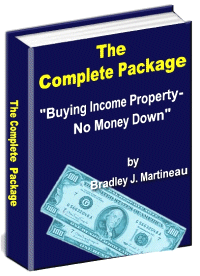What is a good location when you buy a investment property?
Consider the following four perspective:
1. Vitality.
Critical for commercial buildings, economic vitality is also important for residential structures. Tenants may like to live on a quiet side street. However, a vacant unit near a bus or train stop, banks, or stores will command premium rents and will be easier to rent.
Jobs create housing. Jobs also determine the type of housing in an area. Be wary of investing in one-business towns. A review of the local press and a drive down Main Street will tell you where the local economy is heading. Check with the town's planning department to see if it is planning any initiatives to enhance the area's economic vitality. These initiatives could include
low interest loans, building rehab assistance, systematic code inspection, capital
improvements (curb, gutter, and sidewalk reconstruction), selected rezoning and property purchase, and business technical assistance. Check if the city plans to implement rehab mechanisms, such as the following:
A. Tax increment financing. Tax revenues from a downtown district are frozen while increases in revenues are put into improvements. The districts sometimes last for 20 years, can give officials special condemnation
powers over downtown property owners, and often involve extensive street renovation.
B. Special-service districts. These districts tax downtown property owners for special improvements, such as sewer lines, decorative
street laitips, and parking ramps.
C. Outright government ownership of property and partnership in development via industrial revenue bonds.
The U.S. Census Bureau provides local planners with analyses of where the town's population is heading. If you have a speculative frame of mind, you
and wait."
2. Accessibility.
Some buildings have visibility and are surrounded by vitality. But, because of traffic flow and congestion, they make poor
investments. How hard is it to get to the building? An apartment with a garage is better than a brownstone with on-street parking. A corner-lot store with ample parking is better than a storefront on a hill or on a one-way street hiding behind a row of parking meters. The demise of some urban malls demonstrates the importance of accessibility. City planners touted urban malls as the answer to the afflictions of aging downtowns. Under the banner of urban renewal, streets were blocked, paved with cobblestones, and planted with trees and flowers. Full pedestrian malls, where you close the streets and reroute traffic, start to look like graveyards. The "store for
sale" signs start appearing. As consumers drove to the shopping malls, stores in the urban malls died.
3. Quantity.
What is the competition? Some locations may be overbuilt. Rents will reflect this market saturation. As a city grows, congestion often rises in such public facilities as highways, parks, court systems,
museums, and schools. Such crowding usually makes these facilities less
desirable, thereby restraining the city's growth. Anything that restricts the city's growth will protect your rents. These include zoning restrictions, mountains, and parks.
4. Quality.
Look for a neighborhood that has stabilized or is coming into favor. Many of these neighborhoods are close to urban areas or next to pockets that are making a comeback. However, choosing a structure in an up-and-coming area wilt probably mean that renovations are needed. An architect or structural engineer usually can tell you if the building is worth preserving-Make sure the neighborhood isn't deteriorating. If the value of your
neighbor's property decreases, the value of your property will go down. Diversify your real estate into varied areas so that a
single neighborhood's decline won't tarnish your entire estate. Look for a property in a section of the city that has good schools, easy access to a major business district, and recreational and cultural amenities. Ask: Are there any objectionable smells or noises? What public transportation is available? Are streets well lighted, well patrolled, well maintained? What is the outlook for special assessments?

